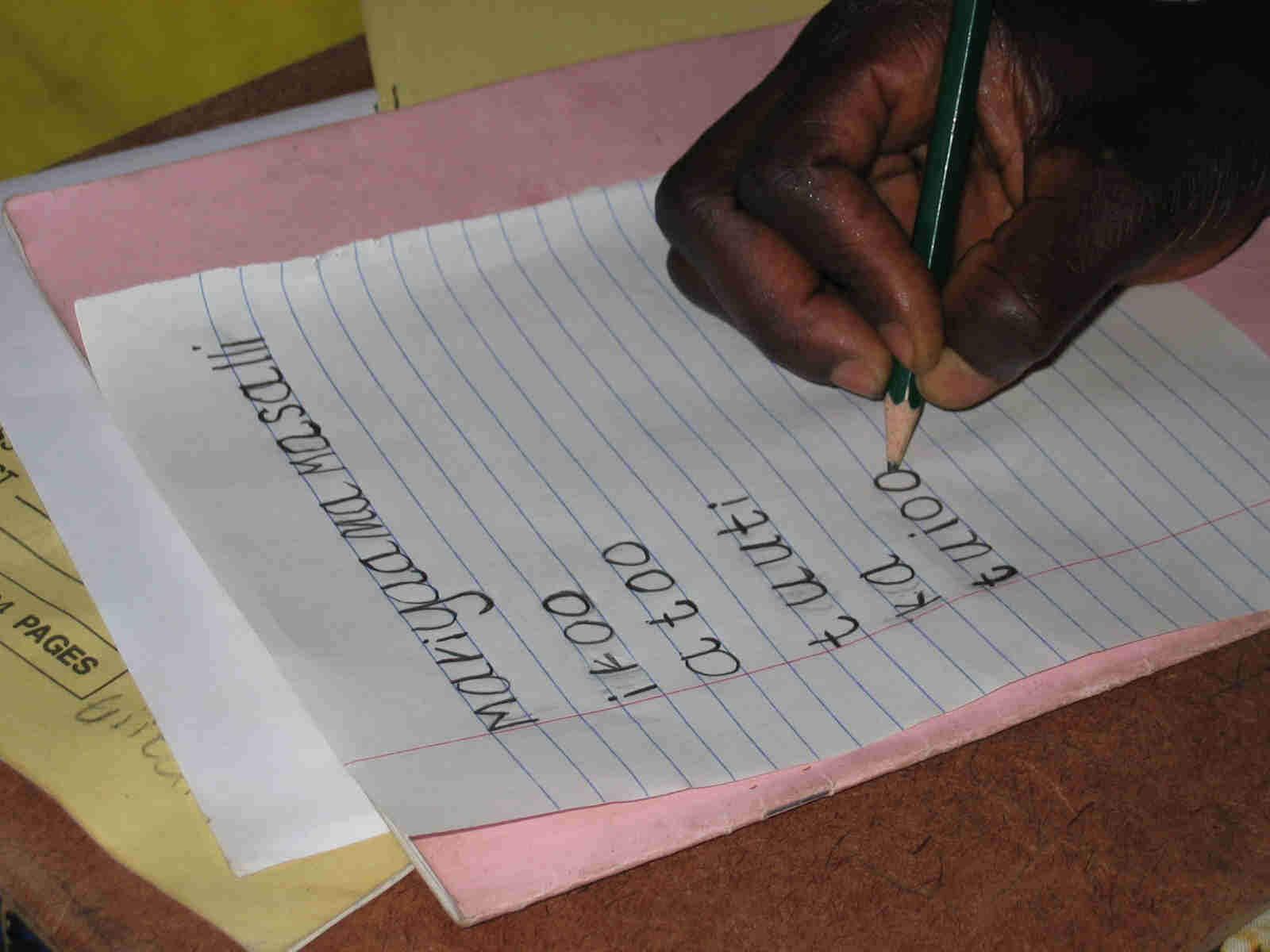Read and write Mandinka To write Mandinka is relatively easy, because it is a phonetic language. This means that the letters sound the same in any position. However, this is true for individual words, but in word fusions certain changes take place: |
Example 1.
"Say it to him" |
= |
"A fo a ye" |
it sounds |
"A faa ye" |
It is essential to put the stress on right syllables when speaking, although it is not normally marked
in written language. However, the meaning is normally clear because of the context:
Example 2.
Wuloo te wuloo kono |
= |
The dog is not in the bush. |
wuloo = dog: wuloo = bush: |
the stress is on the second syllable, the stress is on the first syllable |
However, the stress is marked in order to make a distinction between I/we and you(singular)/they.
The low stress mark ( ` ) is put on the word to indicate the plural.
Example 3.
They won’t come to your place |
= |
Ì te naa la i yaa. |
The special characters of Mandinka are shown in the picture below.
You can read some further instructions in English from a PDF-file, open here.
